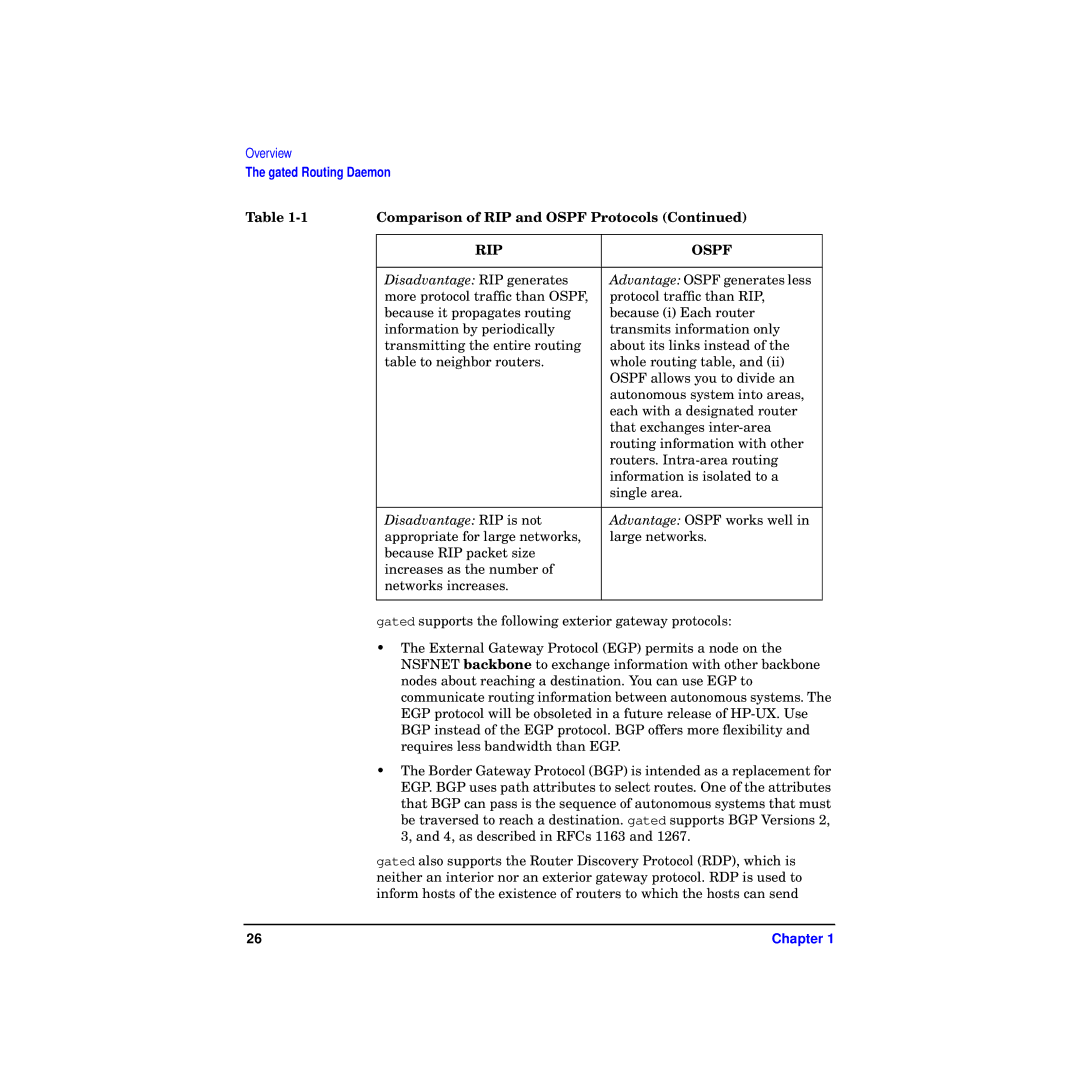
Overview
The gated Routing Daemon
Table | Comparison of RIP and OSPF Protocols (Continued) | |
|
|
|
| RIP | OSPF |
|
|
|
| Disadvantage: RIP generates | Advantage: OSPF generates less |
| more protocol traffic than OSPF, | protocol traffic than RIP, |
| because it propagates routing | because (i) Each router |
| information by periodically | transmits information only |
| transmitting the entire routing | about its links instead of the |
| table to neighbor routers. | whole routing table, and (ii) |
|
| OSPF allows you to divide an |
|
| autonomous system into areas, |
|
| each with a designated router |
|
| that exchanges |
|
| routing information with other |
|
| routers. |
|
| information is isolated to a |
|
| single area. |
|
|
|
| Disadvantage: RIP is not | Advantage: OSPF works well in |
| appropriate for large networks, | large networks. |
| because RIP packet size |
|
| increases as the number of |
|
| networks increases. |
|
|
|
|
gated supports the following exterior gateway protocols:
•The External Gateway Protocol (EGP) permits a node on the NSFNET backbone to exchange information with other backbone nodes about reaching a destination. You can use EGP to communicate routing information between autonomous systems. The EGP protocol will be obsoleted in a future release of
•The Border Gateway Protocol (BGP) is intended as a replacement for EGP. BGP uses path attributes to select routes. One of the attributes that BGP can pass is the sequence of autonomous systems that must be traversed to reach a destination. gated supports BGP Versions 2, 3, and 4, as described in RFCs 1163 and 1267.
gated also supports the Router Discovery Protocol (RDP), which is neither an interior nor an exterior gateway protocol. RDP is used to inform hosts of the existence of routers to which the hosts can send
26 | Chapter 1 |
